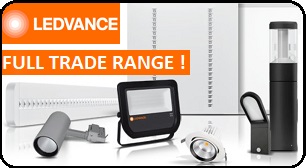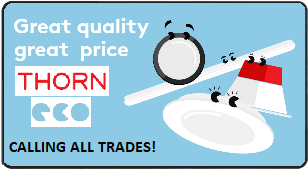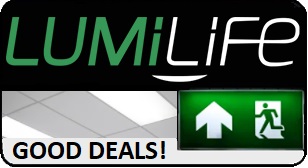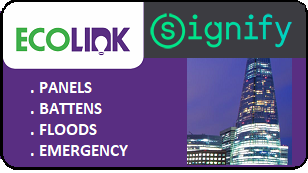Frequently Asked Questions:
Q. What are LEDs?
A. A light-emitting diode (LED) is a semiconductor light source. LEDs were first intoduced as a practical electrical component in 1962, where they were used as humble indicator lights in electronic devices. More recently, the technology has advanced at such a pace that it has now enabled a new category of lighting that is superior in most respects to conventional incandenscent and halogen lighting. LED lighting is now highly efficient, long lasting, environmentally friendly, and inherently controllable - enabling both new and traditional applications of light. LED based solutions now illuminate famous buildings, bridges, hotels, shops, studios, hospitals etc. around the world.
Q. What are the advantages of LEDs?
A. LEDs have a variety of advantages over other light sources: high levels of brightness and intensity, high efficiency, low voltage and current requirements, low radiated heat, high reliability (resistant to shock and vibration), no UV rays, long source life, and can be easily controlled and programmed.
Q. LED bulbs are more expensive, why should I buy them?
A. It is important to consider the total cost of ownership when making a purchasing decision regarding LED bulbs, lamps or tubes. As we all know, incandescent bulbs (phasing out by European Commission) and halogen bulbs have poor lifetimes. They blow at the wrong times, often creating in-rush currents that cause other lamps on the circuit to blow. Replacement can take considerable time and effort, if they are located in difficult to reach places. LED bulbs can last up to 50,000 hours (well over 10 years in many cases) meaning you dont have to buy or install replacements, and they consume up to 90% less energy (equals 90% less CO2 emissions). Many 50W halogen equivalent GU10 LED lamps consume just 5 to 6 watts - so for every hour its switched on, you save 44 to 45W with no compromise on light quality. Factor in light usage, and increasing electricity prices, and you can soon see that LED bulbs pay for themselves very quickly, and continue to deliver savings for many years afterwards.
Q. What is the payback time on an LED bulb investment?
A. The answer depends on light utilisation. For business such as hotels or shops where the lights may be on for over 16 hours a day, the payback is very quick (often a matter of months) due to savings in electricity cost. For homes and smaller businesses where the lights are on less of the time, the payback may be slightly longer, but will usually be 1 to 2 years. Of course, the less the LED bulb is used, the longer it lasts. Indeed the Carbon Trust sees LED lighting as one of the best energy saving retrofit measures you can take in terms of payback time. Consider a house that contains 100 x 50W halogen lamps. If these were replaced with 100 x 5.5W LED lamps, and used 4,000hrs a year, the payback time would be just 10 months with annual savings of £1,428 with total lifetime savings of almost £9,000. Finance options are available from Novel Energy Lighting, to cover large retrofit projects. In these cases the energy cost savings are guaranteed to cover the loan repayments.
Q. I’ve tried replacement LEDs before and I wasn’t impressed.
A. We hear this a lot. Due to the changing nature of the lighting market (phasing out incandscent bulbs, and ascendancy of LED), we are seeing the market being flooded with cheap import LEDs from places like China. These LEDs are often advertised as having 50,000+ hour lifetimes and equivalent light quality. Unfortunately you get what you pay for, and many cheap LEDs will fail quickly or have poor light quality. This is precisely why Novel Energy Lighting ONLY sells top quality, market leading, trusted brand LEDs like those from Philips and Megaman. Philips has invested over £4BN in LED lighting, which shows in the quality of the LED lamps and fittings range. Light quality is truly equivalent, energy savings are confirmed, and each sale is backed up by a 3-5 year manufacturer warranty.
Q. Do I need to change any wiring to install LED bulbs?
A. No. Most of the Professional range LED lamps have been designed to be a direct drop-in replacement for conventional incandescent, halogen, or fluorescent lamps and tubes. Indeed, their patented intelligent integrated driver for low voltage (12V) lamps (MR16, MR11, Capsule, AR111) means that these LED lamps will run on almost any existing electronic and electromagnetic Halogen transformers. Please see our LED Transformer Guide here: LED Transformers
Q. Are LEDs dimmable?
A. Please see our LED Dimmer Guide here: LED Dimming. The rule of thumb is that max total LED lamp power should be <=1/10th of dimmer's max rated power. GU10 LEDs should be broadly compatible with Leading Edge R and RL type dimmers, but NOT RC, RLC, Trailing Edge, or any dimmers with neon/LED light indicator.
Q. What types of lighting products do you stock?
A. LED Lamps, bulbs, and tubes: we stock the entire Philips LED range of lamps bulbs, and tubes, and much of the Osram and Megaman LED ranges. We also carry various other quality brands where we feel they add value to our porfolio - such as Aurora, and Heathfield. Most of the products come with a 3 - 5yr warranty. LED Fittings: We stock a large range of Philips, Thorn, LumiLife, Aurora, and MEGE trade LED fittings range, including the best-selling MEGE 600x600 and 1200x600 LED ceiling panels which come with a 7yr warranty. Our range is constantly expanding with new products that meet our criteria of quality, durability, and lumen output. Please contact us at sales@novelenergylighting.com if you would like to purchase any lighting solutions that you do not see listed. We can source almost any lighting product, and are a solutions-orientated business. If you need a product that you dont see on the website, call us. We'll find whatever you need at very competitive prices!
Q. What is your returns policy
A. Please see our Returns Policy here: Returns Policy. Goods can be returned to Novel Energy Lighting Ltd. at any time up to 14 days from receipt, please contact us at support@novelenergylighting.com to arrange return. Also, please see our Warranty Policy here: Warranty Policy. We guarantee most lamps and fittings for the duration of the manufacturer's warranty.
Q. What is Colour Temperature with LEDs, and how can I decide which white to go for?
A. Please see our LED Guide for more details: LED Guide. LEDs come in a range of different white light tones, ranging from warm white (2,700K) to daylight (6,000K+).
- Warm white (2,700K) has a yellow tone, and is generally considered to be a closer match to incandescent bulbs or halogens. Most of the time this will be a great choice for homes, where a more intimate mood lighting is required
- A more neutral white tone is found in the 3,000K option, which is a safe bet for contemporary bathrooms and kitchens, where a crisper, brighter light is required.
- Cool white (4000K+) has a bluer tone, and is popular with retail and utilitarian (e.g. parking) environments where a white tone approaching daylight is required. Shops often use this colour for accent lighting and product displays. . It may be too “white” for most people’s tastes in a home unless used as feature lighting.
Q. Do LEDs get hot?
A. One of the major problems with incandescent and halogen lighting is their very inefficient conversion of electricity to light. Over 90% of the electricity input gets converted to heat. As you know by now, LEDs are much more efficient, and consume up to 90% less electricity for comparable light output. Consequently LED bulbs run much cooler than traditional bulbs, although they do get warm to the touch. Philips has designed their LED bulbs with supporting heat-sink infrastructure to channel aware heat from the chips and lenses, which also results in longer lifetimes. However, for warranty purposes, Philips requires customers to install its LED lamps in fittings which provide at least 10mm air gap around the lamp.
Q. How can I tell which type of LED lamp or bulb I should use?
A. Please see our LED Guide page for guidance on lamp types and bases. In general, LED bulb nomenclature matches that of traditional bulbs. So if you are intending to replace a mains voltage GU10 halogen, look for a GU10 LED. Both LED wattage and halogen equivalent wattage are provided for most lamps (equivalent wattage is usually in brackets).
Q. Are LED bulbs any better than low energy compact fluorescents (CFLs)?
A. Total cost of ownership of CFLs is poor, lifetimes are not great, light quality is harsh (and contains harmful UV radiation), they are bulky (some say ugly!), most are not dimmable, energy efficiency is average (LED bulbs are generally 50% more efficient), and the big concern is that CFLs contain toxic mercury vapor and are therefore hazardous waste, which make them a pain to deal with if they break or fail.
Q. How long do LED bulbs last?
A. Just to set the scene: incandecent bulbs are rated for 1,000hrs life; halogen bulbs are rated for 2,000hrs life; LED bulbs can be rated up to 50,000hrs life. Depending on light usage, LED bulbs can operate for over a decade without needing to be replaced! This is one component of the total cost of ownership benefits for LED bulbs. which makes them a great retrofit investment.
Q. Which bulbs are cheaper to run - low voltage 12v or mains voltage 230-240v?
A. Cost to run depends on the bulb wattage. For example, compare a 5.5W GU10 ( 50W equivalent) mains voltage LED to a 8W MR16 (50W equivalent) 12V LED. The mains voltage option runs at slightly less wattage - this is because (amongst other reasons) there are no power losses due to voltage transformation. Another point to consider if you are designing your lighting system from scratch is that the lifetime of your low voltage LED lamp may depend on the lifetime of your mains-to-low voltage transformer (often less than the LED lifetime rating!).
Q. How can I dispose of my old lamps and fittings when I buy new ones?
A. Please see our Waste Electrical & Electronic Equipment (WEEE) information page here for more details









